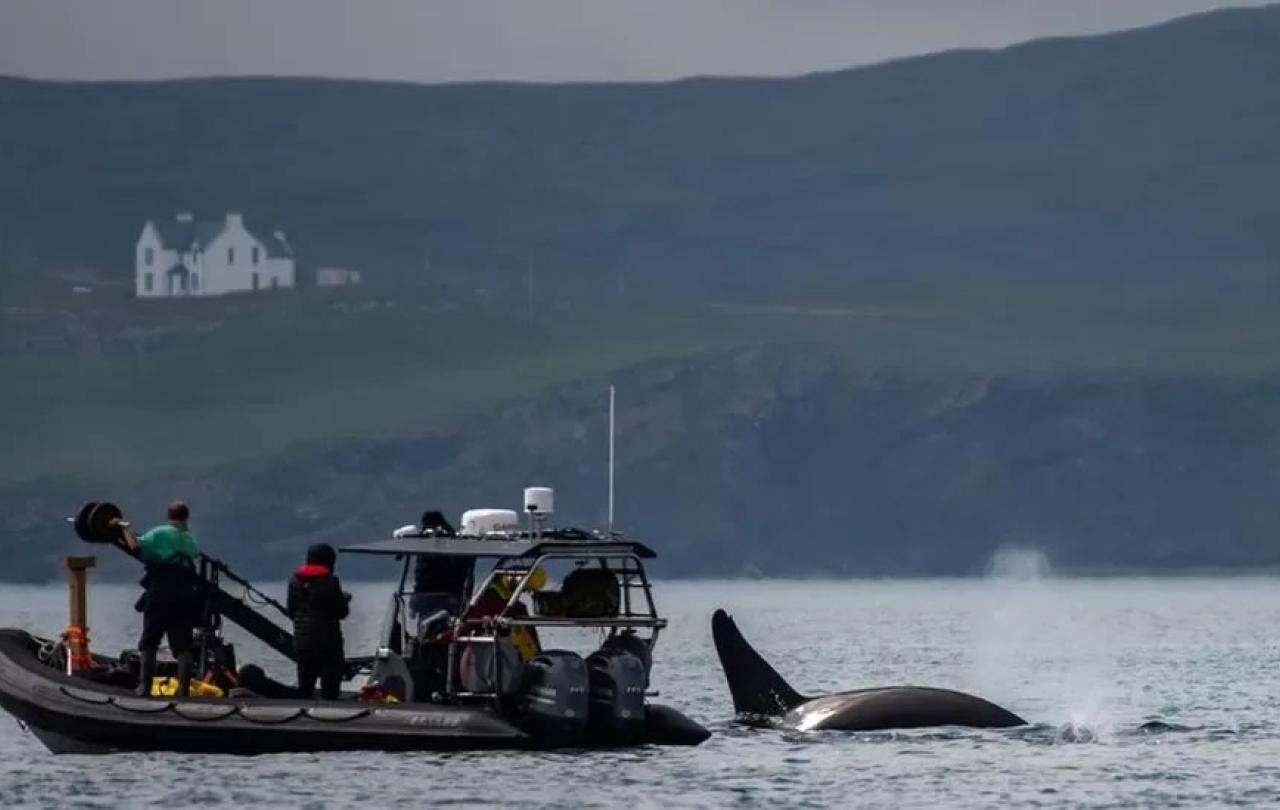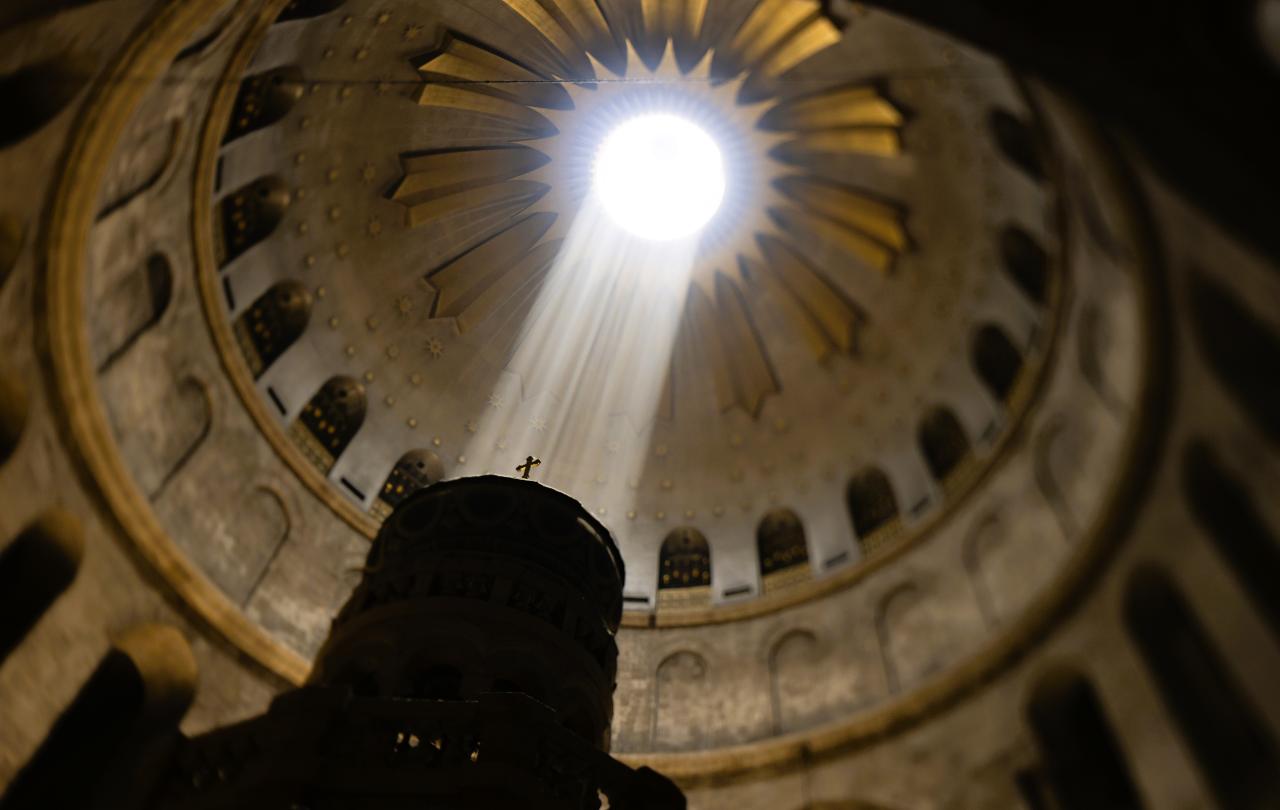
In May 2023, British sailor Iain Hamilton was aboard his yacht in the Strait of Gibraltar when it was set upon by a pod of five orcas who succeeded in biting off both rudders, leaving him with no means of steering his boat back to shore. These enormous killer whales could have destroyed the small boat in its entirety, rounding off their escapades by making a quick lunch of Hamilton and his crew. But instead, they seemed content to merely play with the small vessel, pushing it around “like a ragdoll” for a while, before swimming away to find their next meal elsewhere.
How do we explain such behaviour? Environmentalists have been quick to suggest that the orcas are demonstrating their frustration with the human race – carrying out revenge attacks on those callous two-legged beings who overfish their waters and pollute their habitat. Other commentators propose a less anthropocentric view. One leading zoologist, Mark Cowardine, attributes the whales’ behaviour simply to play, “Boisterous play, yes, by animals weighing up to six tonnes, but nothing more sinister than that.”
The phenomenon of whales attacking boats is not new. Herman Melville’s magnum opus Moby Dick (published in 1851) is a fictional tale of one such encounter, inspired in part by the real-life sinking of a ship, The Essex, during a whale attack in 1820. However, there appears to have been a surge in such incidents in European waters over the past few years – more than 500 orca attacks were recorded between 2020 and 2023 alone. It is thought to be largely the same pod of whales who are responsible, but scientist fear that other pods are beginning to learn the behaviour.
This raises the question: at what point should humanity intervene to prevent the spread of knowledge? Theoretically, it would be possible, to isolate the ring leaders and remove them from whale ‘society’ (send them to ‘whale jail’ if you like). And, let’s be honest, in previous generations, trophy hunters would have blithely exterminated the troublesome pod without a second thought. But we live in more enlightened times, wherein we respect nature’s right to be protected from human interference.
The whale world has its own language, with distinct dialects, and is even thought to have culture, including celebration of life events and rituals for grieving the death of a family member.
On the other side of the globe, this right has even been enshrined in law. Pacific Indigenous leaders from the Cook Islands, French Polynesia, New Zealand and Tonga have agreed a treaty that officially recognises whales and dolphins as having legal personhood. The Whanganui River in New Zealand is also recognised as a “legal person” – a move intended both to enact reparations for the damage done to the river by European settlers, and to protect it from any future harm by the human race.
A being that is recognised as having legal personhood is one which has “rights and duties itself and which can enforce these rights against other legal persons.” So far so good for a river, which is vulnerable, not sentient, and certainly needs protecting from our shocking ability to exploit and pollute the natural world. But what can we say about whales and dolphins? Unlike the river, they are sentient. The whale world has its own language, with distinct dialects, and is even thought to have culture, including celebration of life events and rituals for grieving the death of a family member. With such obvious evidence of moral intelligence, should we be considering the ‘duties’ inherent to a whale’s legal personhood, as well as the rights?
The whales still seem to be communicating the same message: our ocean is vast, and we can make you humans feel your tininess in it.
In parts of the Hebrew Bible, animals are already described as having personhood. In the creation story both humans and animals are described as having nephesh – a Hebrew word that is sometimes translated as ‘soul’, and which indicates certain aspects of what it means to be sentient and have a moral conscience. Intriguingly, God seems to employ this sentience – at times employing animals to communicate with humans.
One famous example even includes a whale. When the runaway prophet Jonah was thrown from a ship into the ocean, we are told that God directed a large fish to swallow him up, and after three days return Jonah to dry land to continue the work to which God has asked him to do. In another example, when the donkey of the prophet Balaam was being unfairly beaten, the Bible records that the donkey turned and said to his master, “What have I done to you, that you have struck me?”
It is clear that some of the biblical writers believed that God could and would use animals to communicate with the human race, either through their behaviour or even through direct speech. Therefore, these orca “attacks” make me wonder if God may still be doing so today. Whilst both humans and animals are described as having nephesh in the creation story, the story does then go on to distinguish humans as having ‘dominion’ over the created order. The idea of what it means to have ‘dominion’ has been interpreted differently through the centuries of Christian thought. In the time of Moby Dick, when the fashion for trophy hunting and taxidermy was at its height in the western world, dominion had a feel of superiority and dominance to it. These days, it is more common to hear ‘dominion over creation’ described in terms of responsible stewardship and care.
But whilst human culture has changed (arguably for the better) it is noticeable that between Moby Dick’s time and now, the whales still seem to be communicating the same message: our ocean is vast, and we can make you humans feel your tininess in it. The temptation is there for us to intervene, to prevent these boisterous orcas from perpetuating their violent behaviour. This would serve to silence the voice that reminds us, uncomfortably, of our fundamental human vulnerability on the ocean. But perhaps we should not be too hasty. We cannot know if, inherent to the personhood of whales, they have a ‘duty’ to keep us in our place. Perhaps it is even their God-given call to behave in a way that reminds us that creation is ultimately, untameably, wild. Listening carefully, we might yet discover that God is speaking to us in whale song.





